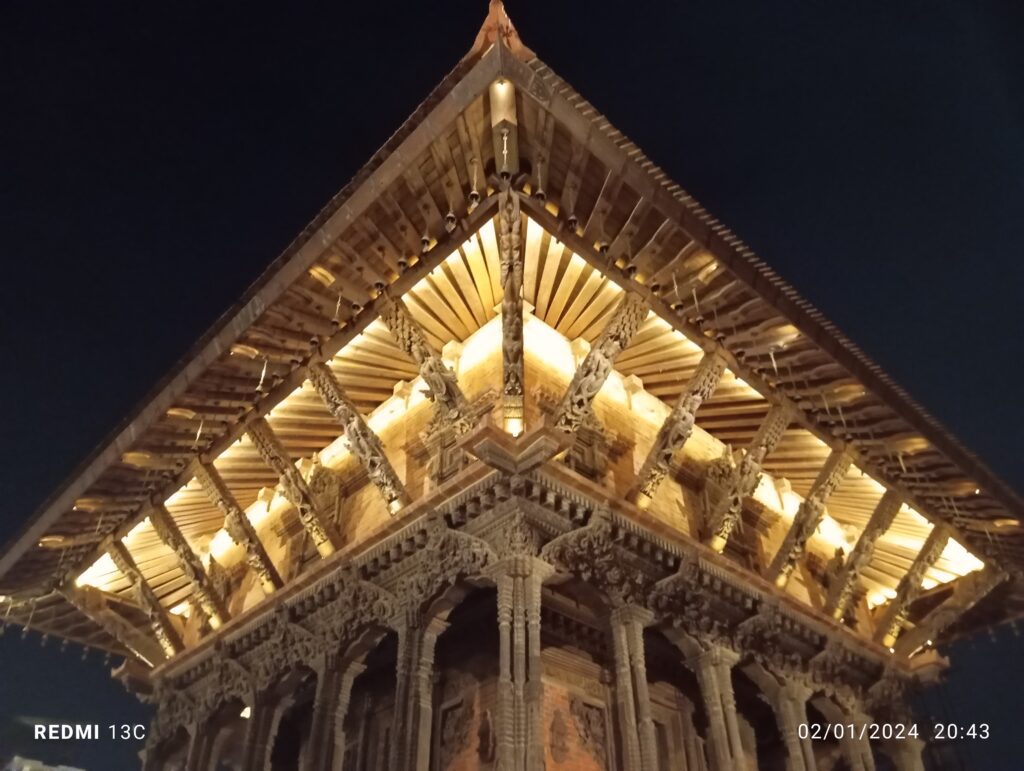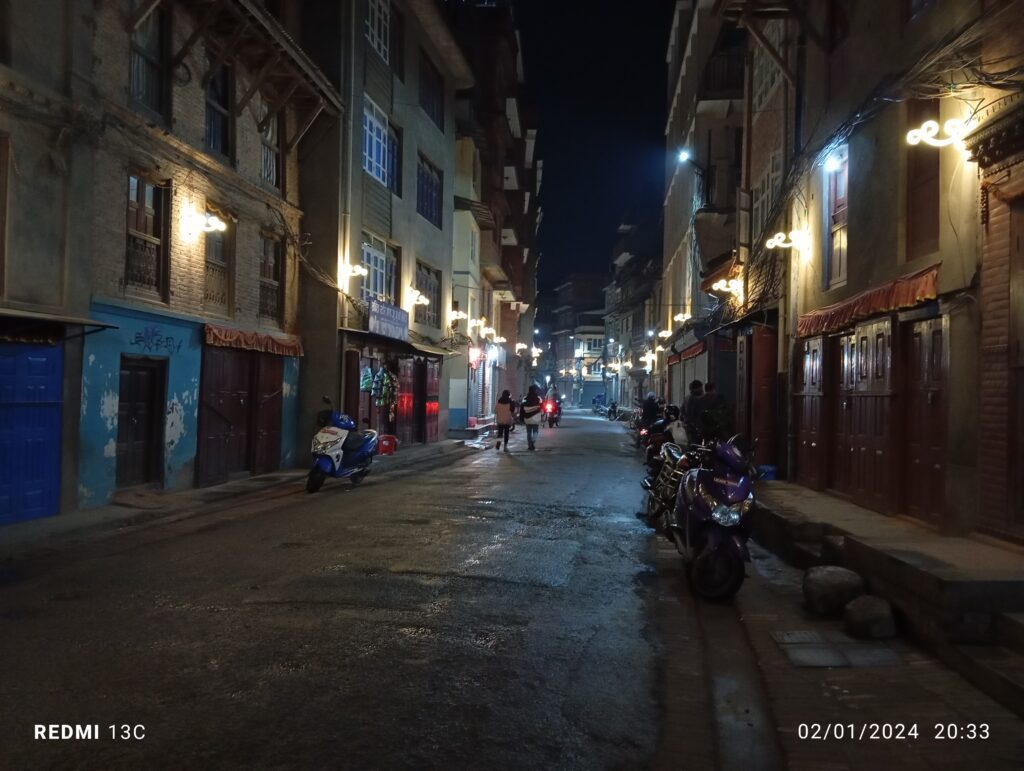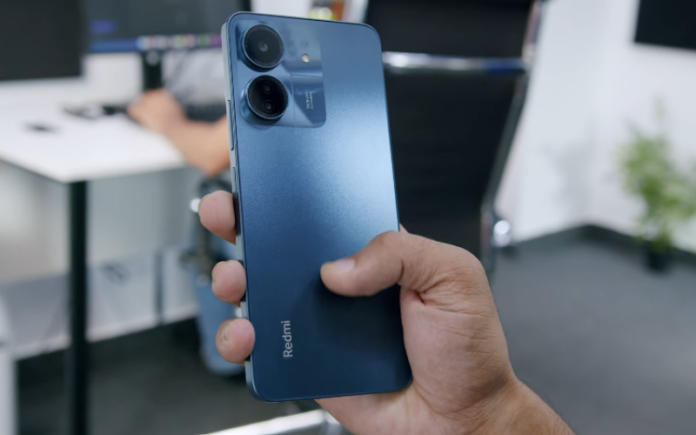Over time and with plenty of options for the user, the budget smartphone competition has intensified. Following a relatively uneventful 2022 for budget phones, companies are eager to cater to the pent-up demand from cost-conscious Nepali consumers seeking faster connectivity without breaking the bank.
Recognizing a significant opportunity, Xiaomi has entered the market with not one but two new affordable handsets – the Redmi 12 and the closely related Redmi 13C. I’ve spent over a week testing the Redmi 13C. In this review, I’ll provide insights into whether Xiaomi’s latest endeavor to dominate the budget segment stands out as a winner or merely offers more of the same. The phone costs Rs 13,999 for the 4/128GB variant, Rs 15,999 for 6/128GB, and Rs 18,999 for the 8/128GB variant. here is the Redmi 13C Full Review and analysis.
Redmi 13C Full Review and Analysis:
Design
On the first look, the Redmi 13C 4G looks like the Redmi 12 5G, but with some changes. It has a flat edge and big holes for the cameras on the back. The front has a small drop-shaped notch and thick borders around the screen, which are outdated for 2024. The good thing is that the plastic frame is strong, and the back has a shiny glass-like finish. I wouldn’t say I like the glittery parts on the back. But when I asked some friends and family members, they had different opinions. So I think some of you may like a flashy look. But everyone agrees that the Redmi 13C is very big. It has a huge 6.74-inch screen, which is bigger than the iPhone 15 Pro Max and Samsung Galaxy S23 Ultra. It can be hard to take care of because the box does not have a protective case.

It also does not have an Infrared transmitter, a popular feature in Redmi phones. It has the same ports and buttons as other phones, including a 3.5mm headphone jack. It has a fingerprint scanner on the side power button. The scanner does not work well sometimes. It did not work well for me most of the time.
Display
The Redmi 13C has a tall screen that lets you see things in a new way, which is a good feature. The screen is 6.74 inches, which is very big compared to other phones. You can enjoy reading WhatsApp messages or news articles and browsing social media apps on this screen. The screen can also show you videos, but the quality may vary depending on what kind of user you are. For new smartphone users who have not used other phones before, the Redmi 13C’s HD+ screen with a 90Hz speed might be enough for them.

The HD+ screen means that the screen has a high resolution and can show you sharp and clear images. But for those who have used older devices before and are used to better screens – and I think there are many of them – Xiaomi should have used a full HD screen for the Redmi 13C. A full HD screen has a higher resolution than an HD+ screen and can show you more details and colors.

I tested the Redmi 13C LCD screen by watching videos and shows on YouTube and Netflix. YouTube videos look clear and crisp in high resolution, but Netflix videos need to be improved. Netflix videos did not look as good as YouTube videos because Netflix does not support the HD+ resolution of the Redmi 13C. Netflix only supports full HD or higher resolutions for some of its content. The overall watching experience on the Redmi 13C is also normal because the phone does not have two speakers. It only has one speaker at the bottom, which does not produce a loud or rich sound.
Performance
Looking at the processing sector, MediaTek and Qualcomm are major players in smartphone chips, and their options are quite similar. The Redmi 13C uses MediaTek’s Helio G85 chip. While it may not be the fastest processor available, it operates smoothly and efficiently for its price. Everyday tasks are generally glitch-free, scrolling is smooth, and apps open quickly on this device.
Fully exploring the capabilities of the chip in the user interface is challenging because the 13C uses the same simplified MIUI software found on other affordable Xiaomi phones. The animations are basic, lacking fancy effects, likely to save processing power. For example, the notifications panel has a simple, somewhat unattractive grey appearance. I’ve always thought Xiaomi tends to go too far in simplifying things, and with a capable chip like the Helio G85, this sentiment is even more pronounced.
Below are its some benchmark scores.

Regarding gaming, the Helio G85 performs similarly to the Snapdragon 720G, offering a compelling alternative for those who may not be big fans of Qualcomm. In games like BGMI, the frame rates top out at Smooth + Ultra, reaching around 40 FPS, with no option for the higher Extreme (60 FPS) setting.
OS and UI
Xiaomi just introduced a new HyperOS skin that boosts performance and changes the look of the phone, but it hasn’t been added to many devices yet. The Redmi 13C doesn’t have it, which is unsurprising. However, what bothers me is that the phone comes with Android 13, even though Android 14 has been available for months. This could affect how long the phone receives software updates, as Xiaomi hasn’t specified how many updates the 13C will get. Hopefully, the promised improved optimization of HyperOS will also result in a better user interface.

Camera
Since chips are still expensive, some compromises were necessary in other aspects to keep the costs of the Redmi 13C down. The phone features a 50MP main camera, which performs reasonably well for its price. Additionally, there’s a 0.08MP auxiliary camera (no ultrawide lens), and its purpose might be a bit unclear.
Photos taken in sunlight turn out decent, though the colors are warmer than natural. While these photos may not win any photography contests, they are suitable for sharing on social media. It’s important to keep a steady hand when taking pictures, and when done right, the Redmi 13C can occasionally surprise you with some pretty good shots in daylight, like one of the flowers mentioned above.



However, when you crop or zoom in, the lack of fine details becomes noticeable, which is expected for a budget phone. Nevertheless, it’s not the worst I’ve seen. The selfie camera is just passable overall.
In low light conditions, details suffer significantly on both front and rear cameras, with the introduction of noise. Again, this is not surprising considering the phone’s affordable price point.


Talking about the front camera, it’s overall satisfactory. We can see some distortion in sharpness but considering its price point, it’s good enough.


Battery and Charging
The Redmi 13C has a big battery of 5,000mAh that can charge fast with up to 18W power. The battery can last for a long time on one charge. It does not matter if you use the PCMark app to test the battery or use the phone normally, the battery performance is great. Even if you use a SIM card, a high screen speed, and a bright screen, the Redmi 13C can still work for a whole day without charging. The Redmi 13C comes with a 10W charger that can charge the battery a little bit in 30 minutes. The battery can reach about 20 percent charge in that time. You need more than two hours to charge the battery fully with the 10W charger.
Pros and Cons
| Pros | Cons |
| Greater build and design | Slow charging |
| Bigger screen Size | Average camera performance |
| Great battery backup | bloatware apps |
Verdict
The Redmi 13C deserves praise for its battery capability and price point for making it accessible to many people. It’s a good choice if you care about having a long-lasting battery and good performance. However, it’s important to be realistic about the camera quality and the overall operating system experience. Interestingly, the Redmi 13C faces tough competition from its sibling, the Redmi 12 5G, which has a slightly better processor for just a small difference in price.







